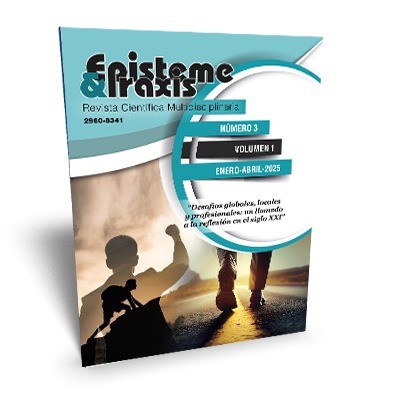Positive communication as a social value in the nurse's work with the elderly
DOI:
https://doi.org/10.62451/rep.v3i1.77Keywords:
Positive communication, social value, elderly, variablesAbstract
This research was conducted on the axiological and moral foundations for developing positive communication in nurses actions when caring for the elderly. Communication, as a social value, goes beyond its social and educational nature and represents a current problem whose solution lies in the social sciences, with a significant influence from Pedagogy. Although methods, techniques, strategies, and programs have been established, they essentially focus on working with socially instituted social and moral values, insufficiently addressing other forms of social or socio-communicative behavior that become social values. As a solution, the objective of this work was to propose variables to promote the formation of positive comunication as a social value in nursing students for their interaction with the elderly aimed at extensionist, labor-research initiatives to foster communication based on love, understanding, tolerance, respect, and empathy as a social value among nursing students. This would shape their behavior during interactions with the elderly. To achieve the objective, a qualitative approach was used, employing philosophical-interpretative methods, document review, and hermeneutic-legal analysis. A bibliographic review of scientific articles from Web of Science and Google Scholar was conducted, focusing on empirical studies related to nurse-elderly interactions. The results revealed that the introduction of these variables contributes to the comprehensive training of nurses in their work with the elderly.
References
Almerco, A. (2022). Cuidado humanizado relacionado con la satisfacción del adulto mayor en la atención de enfermería en el albergue "Casa de Todos", Cercado de Lima, 2022. (Tesis de maestría). Universidad Norbert Wiener.
Amaro Cano, M. C. (2020). Una aproximación a los valores éticos consensuados por la sociedad cubana. Educación Médica Superior, 28(1), 35-49 http://scielo.sld.cu/scielo.php?script=sci_arttext&pid=S0864-21412014000100006&lng=es
Balbona Brito, R., & Cuervo Ledo, J. (2021). La labor educativa de los profesores desde la instrucción. Revista Médica Electrónica, 33(4), 547-555. http://scielo.sld.cu/scielo.php?script=sci_arttext&pid=S1684-8242011000400018&lng=es
Bani Salameh, A.K., Malak, M.Z., El-Qirem, F.A., Alhussami, M., & El-hneiti, M. (2023). Effect of virtual reality simulation as a teaching strategy on nursing students’ satisfaction, self-confidence, performance, and physiological measures in Jordan. Teaching and Learning in Nursing, 19, 235-241. https://doi.org/10.1016/j.teln.2023.11.005 DOI: https://doi.org/10.1016/j.teln.2023.11.005
Cardete Quintero, M. J., De Esteban Curiel, J., & Antonovica, A. (2020). La comunicación persuasiva en política como elemento fundamental en el éxito de nuevas formaciones políticas en España: emisor, mensaje y contexto. Caso Podemos y Ciudadanos. Estudios sobre el Mensaje Periodístico, 26(1), 59-69. https://doi.org/10.5209/esmp.67286 DOI: https://doi.org/10.5209/esmp.67286
Comisión Económica para América Latina y el Caribe. (2022). Envejecimiento en América Latina y el Caribe: inclusión y derechos de las personas mayores. https://www.cepal.org/es/publicaciones/48567-envejecimiento-america-latina-caribe-inclusion-derechos-personas-mayores
Consejo Internacional de Enfermeras. (2021). Código de ética del CIE para las enfermeras. https://www.consejogeneralenfermeria.org/images/pdfs/ICN_Code-of-Ethics_SP_WEB.pdf
Estrada Paneque, A. A., Aguirre Fernández, R. E., Johnson Quiñones, M., Núñez Betancourt, P. L., Aguirre Posada, M. E., & Nivelo Encalada, L. A. (2022). Trastornos hipertensivos durante el embarazo. Editorial Exced. DOI: https://doi.org/10.58594/PLAX6165
Fabelo, J. R. (2011). Los valores y sus desafíos actuales. Editorial José Martí.
Figueredo Ferrer, N., Sotolongo Castillo, I., Arcias Madera, R.C., & Díaz Pita, G.(2003). Caracterización del adulto mayor en la comunidad. Revista Cubana de Enfermería, 19(3),1-20. http://scielo.sld.cu/scielo.php?script=sci_arttext&pid=S0864-03192003000300008&lng=es&tlng=es.
Francés, E., & Camaño, R. (2023). Comunicación interna en centros de atención primaria de salud: una perspectiva de enfermería. Perspectiva de la comunicación, 16(2), 1-21. https://dialnet.unirioja.es/servlet/articulo?codigo=9125256 DOI: https://doi.org/10.56754/0718-4867.2023.3351
Kern, M.L., Waters, L.E., Adler, A, & White, M.A. (2015). A Multimensional Approach to Measuring Well-bering in students: Aplication of the PERMA Framework. The Journal of Positive psychology, 10(3), 262-271. https://doi.org/10.1080/17439660.2014.936962 DOI: https://doi.org/10.1080/17439760.2014.936962
Meneses-La-Riva, M.E., Fernández-Bedoya, V.H., Suyo-Vega, J.A., Ocupa-Cabrera, H.G., Ocupa-Meneses, A.D., & Paredes Diaz, S.E. (2023). Perception of Humanised Care in Hospitalised Patients in a Public Institution in Post-Pandemic Lima, Peru. Academic Journal of Interdisciplinary Studies, 12(2), 15-22. https://doi.org/10.36941/ajis-2023-0027 DOI: https://doi.org/10.36941/ajis-2023-0027
Oficina Nacional de Estadísticas e Información de Cuba. (2024). Salud Pública y Asistencia Social. https://www.onei.gob.cu/salud-publica-y-asistencia-social
Organización de las Naciones Unidas. (2003). Declaración Política y Plan de Acción Internacional de Madrid sobre el Envejecimiento. https://social.un.org/ageing-working-group/documents/mipaa-sp.pdf
Quispe Zanabria, Y.M. (2022). Nivel de satisfacción del adulto mayor respecto al cuidado de la enfermera en el Centro de Salud San Martín de Socabaya - Arequipa-2021. (Tesis de grado). Universidad Continental.
Revelo Poveda, N., & Rodríguez Gamboa, M.S. (2023). Percepción del papel de la enfermería en el cuidado y atención del adulto mayor. Brazilian Journal of Health Review, 6(1), 1581–1594. https://ojs.brazilianjournals.com.br/ojs/index.php/BJHR/article/view/56547 DOI: https://doi.org/10.34119/bjhrv6n1-126
Riverón-Acevedo, K., Caballero-Velázquez, E., & López-Zambrano, Y.M. (2023). La proyección de la asertividad como valor social compartido. Una mirada desde la Axiología. Luz, 21(4), 44-52. http://scielo.sld.cu/pdf/luz/v21n4/1814-151X-luz-21-04-44.pdf
Rodríguez-Bravo, L. (2023). Institutional communication for the management of human talent. Revista Episteme & Praxis, 1(2), 44-53. https://epistemeypraxis.org/index.php/revista/article/download/20/18 DOI: https://doi.org/10.62451/rep.v1i2.20
Singh Chuy, L., Espinosa Abreu, M., Columbié Colas, N., & Cantillo Fernández, Y. (2017). Valores ético-morales y calidad de los servicios prestados de enfermería en Guantánamo. Revista Información Científica, 96(1), 149-159. https://www.redalyc.org/journal/5517/551764049017/html/
Downloads
Published
How to Cite
Issue
Section
License
Copyright (c) 2025 Mirtha Font-Domínguez, Ernesto Anido-Borjas, Elizabeth Caballero-Velázquez

This work is licensed under a Creative Commons Attribution-NonCommercial-ShareAlike 4.0 International License.
Authors who publish in Episteme & Praxis agree to the following terms:
1. Copyright
Authors retain unrestricted copyright to their work. Authors grant the journal the right of first publication. To this end, they assign the journal non-exclusive exploitation rights (reproduction, distribution, public communication, and transformation). Authors may enter into additional agreements for the non-exclusive distribution of the version of the work published in the journal, provided that acknowledgment of its initial publication in this journal is given.
© The authors.
2. License
The articles are published in the journal under the Creative Commons Attribution-NonCommercial-ShareAlike 4.0 International License (CC BY-NC-SA 4.0). The terms can be found at: https://creativecommons.org/licenses/by-nc-sa/4.0/deed.en
This license allows:
- Sharing: Copying and redistributing the material in any medium or format.
- Adapting: Remixing, transforming, and building upon the material.
Under the following terms:
- Attribution: You must give appropriate credit, provide a link to the license, and indicate if any changes were made. You may do this in any reasonable manner, but not in any way that suggests the licensor endorses or sponsors your use.
- NonCommercial: You may not use the material for commercial purposes.
- ShareAlike: If you remix, transform, or build upon the material, you must distribute your creation under the same license as the original work.
There are no additional restrictions. You may not apply legal terms or technological measures that legally restrict others from doing anything the license permits.






